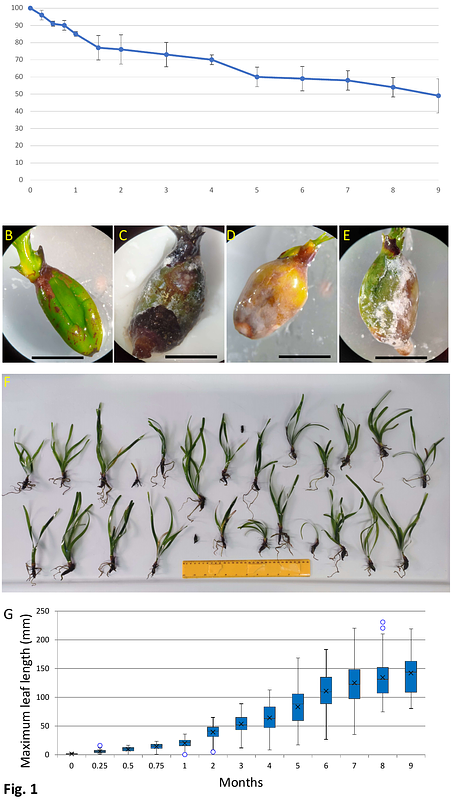Sustaining Seagrass Restoration: Long-Term Preservation of Posidonia oceanica Seeds and Seedlings

Sustaining Seagrass Restoration: Long-Term Preservation of Posidonia oceanica Seeds and Seedlings
Sutera, A.; Spinelli, P.; Pacifico, D.; Carimi, F.; De Michele, R.
AbstractSeagrass restoration efforts using Posidonia oceanica traditionally rely on lateral cuttings, a costly and labor-intensive method that damages parent meadows and limits genetic diversity. Seedling-based propagation presents a viable alternative which ensures genetic variability but is constrained by the unpredictability of seed stranding events and the short window for seed collection. This study establishes a protocol for long-term cold storage of P. oceanica seeds and seedlings, allowing flexible seedling production for restoration. We evaluated the effects of light or dark conditions, container type, and seedling age on viability during storage at 4 {degrees}C for six months. Our results demonstrate that light is essential for preserving viability, as all dark-stored samples died post-storage. Older seedlings (1-2 months old) exhibited higher survival rates (70-90%) compared to freshly collected seeds (40%). Container type did not significantly affect viability, simplifying large-scale storage. Attempts to induce dormancy with ABA or paclobutrazol were unsuccessful. This study provides a scalable approach to decouple seedling production from natural stranding events, facilitating year-round transplantation and enhancing restoration success.